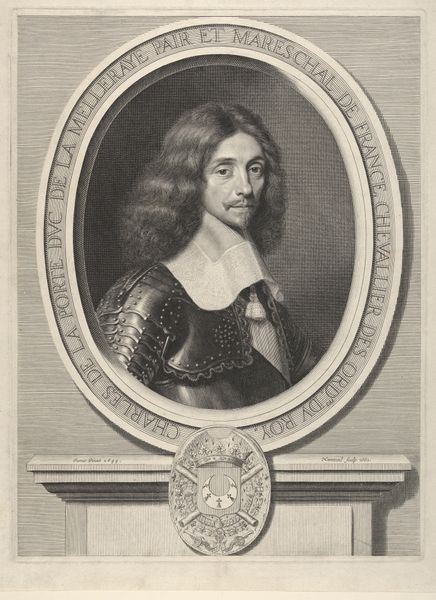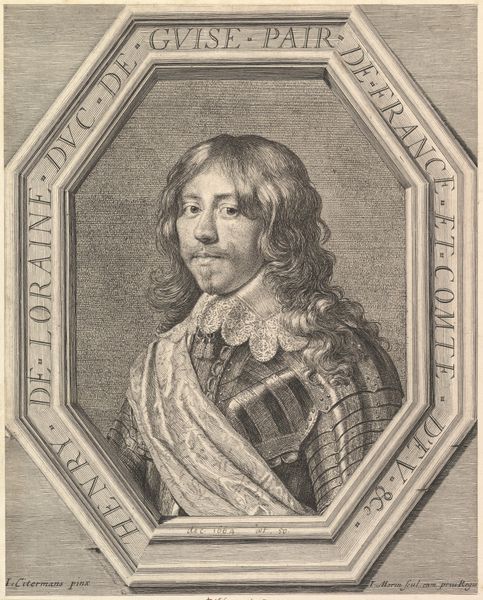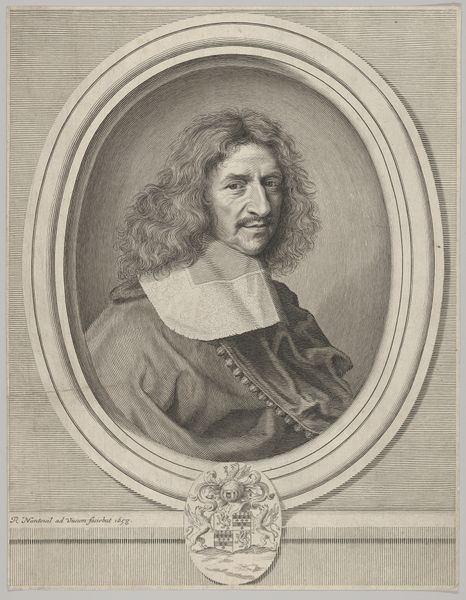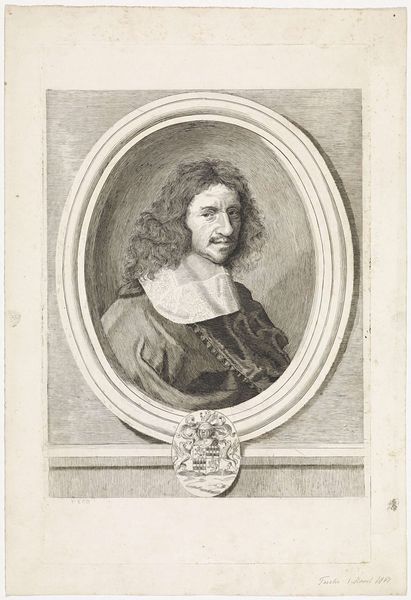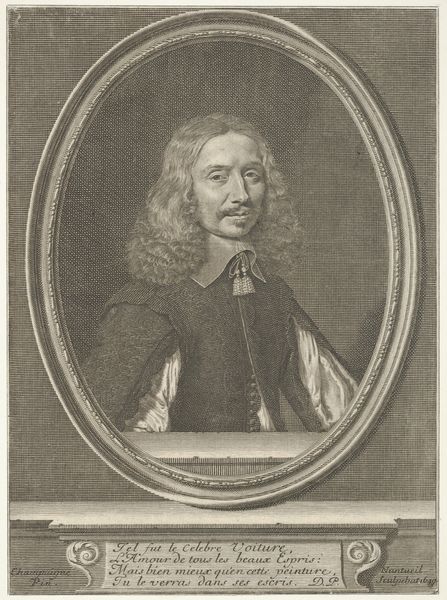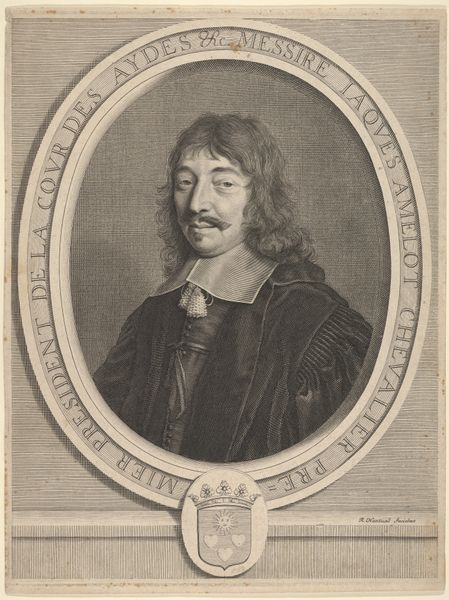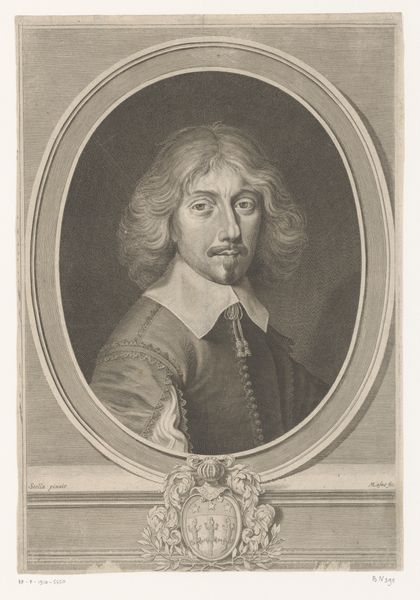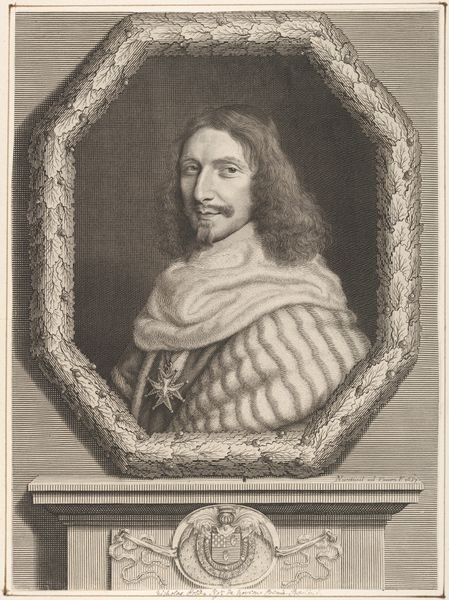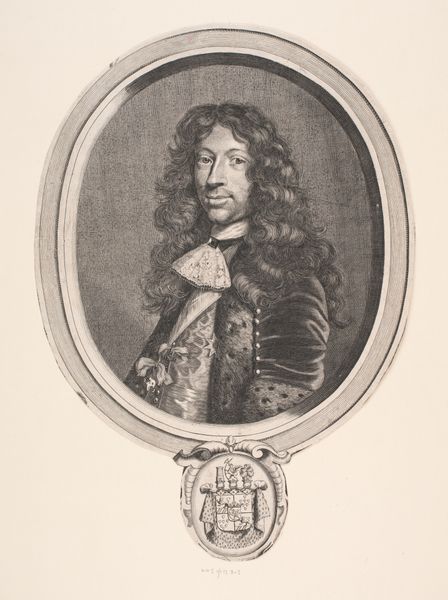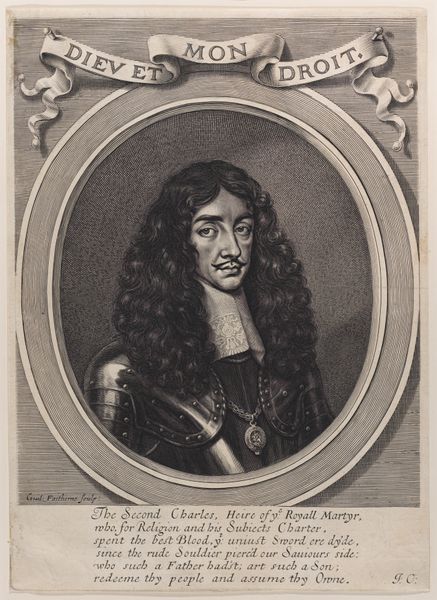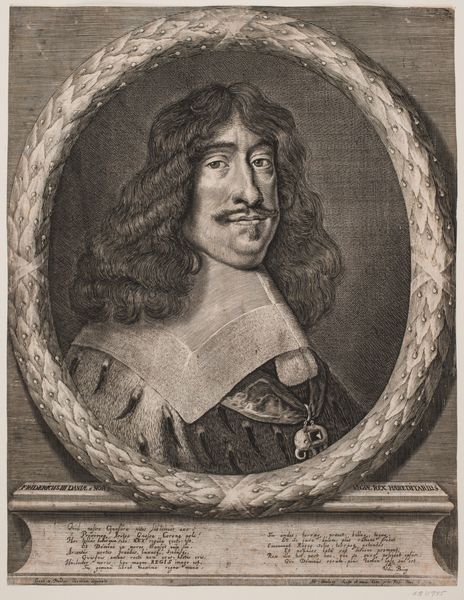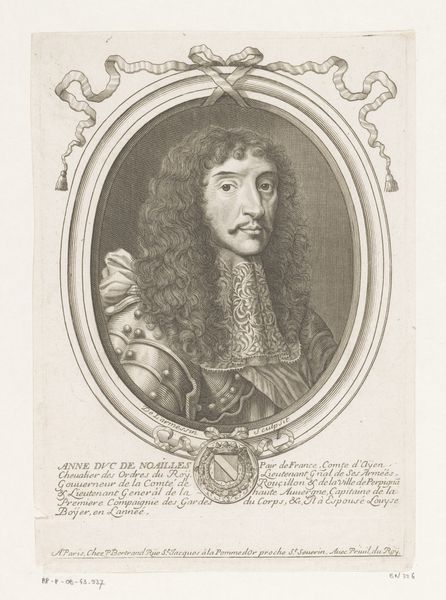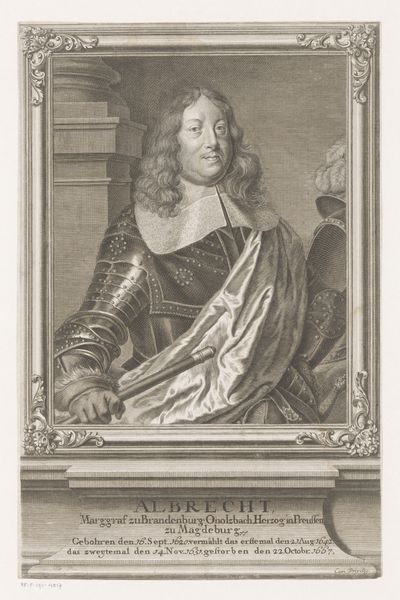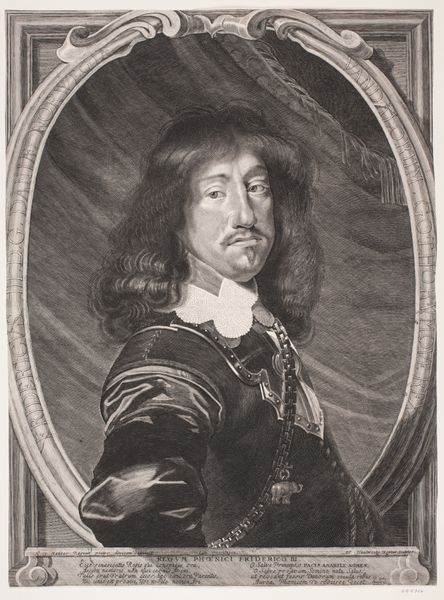
engraving
#
portrait
#
baroque
#
line
#
history-painting
#
engraving
Dimensions: height 248 mm, width 192 mm
Copyright: Rijks Museum: Open Domain
Curator: Take a look at this finely rendered engraving, titled “Portret van Charles de la Porte,” created sometime between 1675 and 1727 by Claude Duflos. What's your first impression? Editor: The detail is incredible! I'm immediately drawn to the intricacy of the lace collar and the decorative jacket. It's a stark image, perhaps suggesting something of the man's character? Stoic, perhaps? Curator: The process of engraving allows for such meticulous detail. Consider the labor involved in producing the original plate. Each line is carved manually. What this suggests to me is a high demand for accurate portrayals, maybe for distribution or for marking someone's importance in society? Editor: Absolutely, and it's critical to situate a piece like this within its socio-historical framework. Who was Charles de la Porte, Duc de la Meilleraye? Power and status dictated who got their portraits made. Let’s consider the ways in which gender and class intersect in visual representations such as these. Curator: I am thinking more about how the circulation of such engravings might affect the social landscape: Do they serve a purpose? Are these intended to solidify power structures? This reproduction creates accessibility to something formerly possessed only by those in the ruling class, but the materials indicate it is still reserved for people who have access to higher levels of consumption and education. Editor: That intersection between power and portrayal is precisely what makes portraits like these so compelling. The way Duflos uses line here isn’t merely decorative; it communicates the Duke's societal position. It creates a discourse between identity, presentation, and authority. What would the impact of these images be to a community? Curator: By dissecting Duflos's technique and acknowledging the labor involved, we begin to see not only artistry but also the societal framework influencing artistic production. This forces us to examine art's interaction with economics, politics, and consumerism, pushing us to think beyond purely aesthetic values. Editor: Indeed. It reminds us that even what seems like a straightforward portrait is deeply embedded in layers of social and political context. Examining those connections gives the work greater meaning. Curator: A striking piece when considering the means through which it was made, as well as its purpose as propaganda for an upper class elite. Editor: I agree. Duflos's rendering not only captures an individual's likeness, but serves as a marker for an era and its hierarchical structures, too.
Comments
No comments
Be the first to comment and join the conversation on the ultimate creative platform.
